Rose Dale, Manor Farm, Buckinghamshire 1/3
Tell us about your farm – location, size, altitude, climate, soils, enterprises, organic/Pasture for Life/other status etc.
Rose Dale’s Organic Farm is a 90-ha certified Organic and Pasture for Life farm in Chearsley, Buckinghamshire. We have a mix of soils with some areas of heavy clay and flood meadows along the river. Our heritage livestock include pedigree Longhorn cattle and three breeds of sheep - Oxford Downs, Greyface Dartmoors and Gotlands.
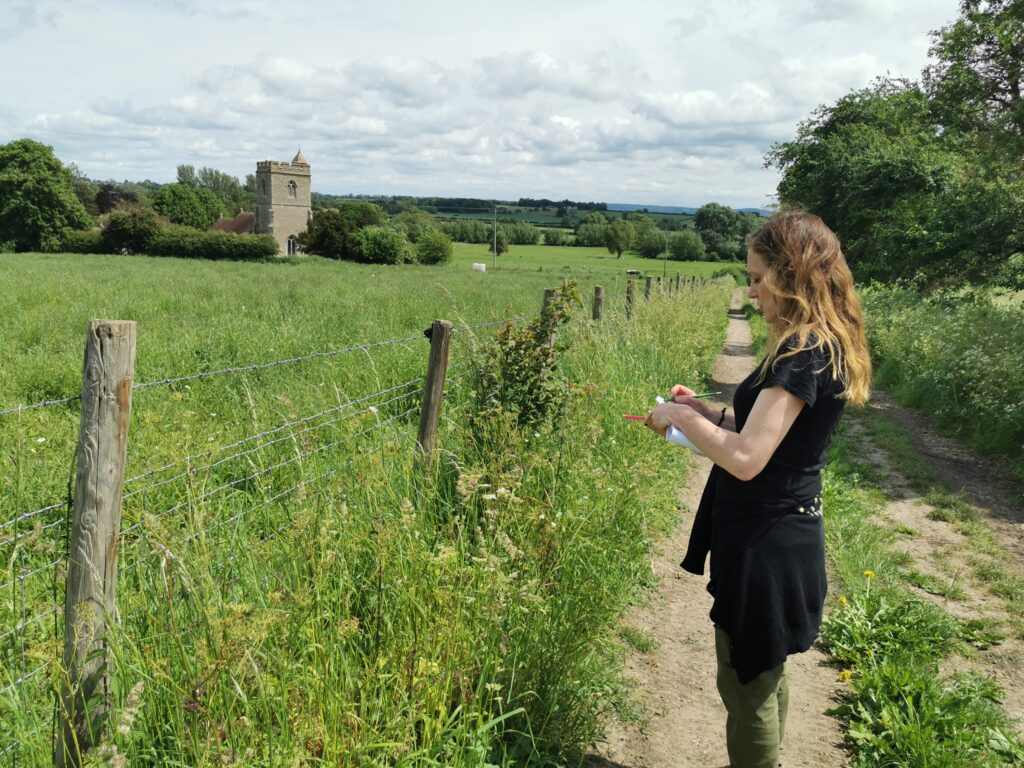 (Photo: Rose Dale completing a survey)
(Photo: Rose Dale completing a survey)
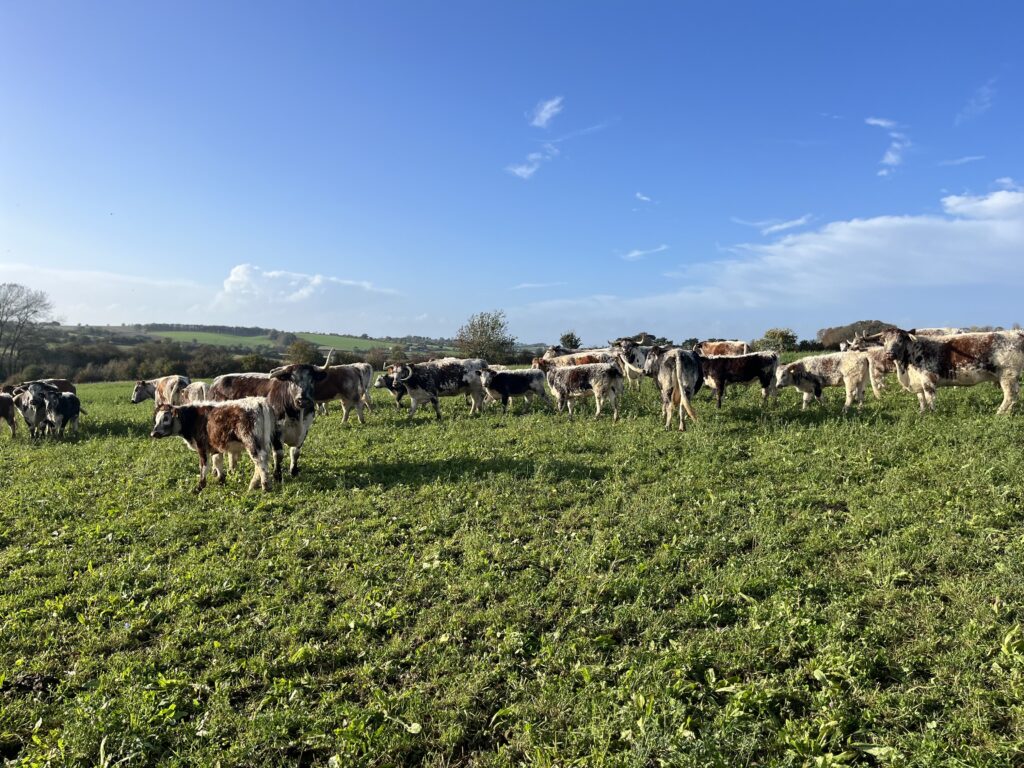 (Photo: Long horns grazing)
(Photo: Long horns grazing)
We sell female pedigrees for breeding and we sell beef and lamb, mainly direct from the farm and through other local shops. We are beginning to sell organic sheepskins and are investigating the wool market, in particular with our Gotlands. We are also considering a Biodiversity Net Gain scheme.
We recently planted a 5ha field to create an orchard with many different heritage cultivars of fruit. This is underplanted with wildflowers and we plan to make this a site for public engagement with a forest school and fruit picking activities. Two public footpaths run through the farm, one being the popular Thame Valley path. The railway between London and Birmingham also cuts through the farm, which provides a valuable wildlife corridor.
At the heart of all our farming practices is soil and ecosystem health, the foundation for a healthy farm system. We follow nature-friendly farming practices to enhance biodiversity and regenerate wildlife which in turn ensures a thriving and beautiful countryside for everyone to enjoy.
We place great importance on engaging with local people, whether through direct sales of meat, working with local supply chains and businesses or running educational visits for local children or other groups.
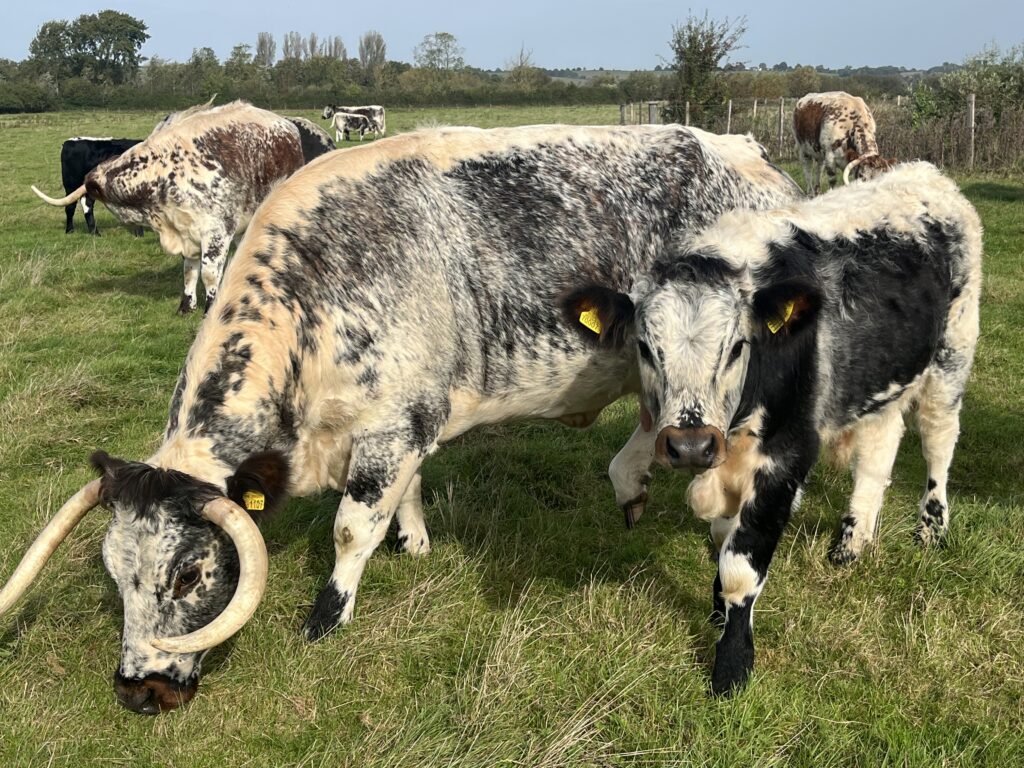 (Photo: Long horns)
(Photo: Long horns)
Give us a picture of the biodiversity on your farm – essentially above ground (but reference to below ground if relevant) – both flora and fauna.
The farm has some semi-natural woodland and a good network of hedges and native trees, many of which were planted by my parents over the last 50 years. There were few hedges when they arrived in 1969. We have a new wetland site (that was been grant-funded through the River Thame Conservation Trust and Freshwater Habitats Trust) with ponds and scrapes which lie near the River Thame, the farm’s southern boundary.
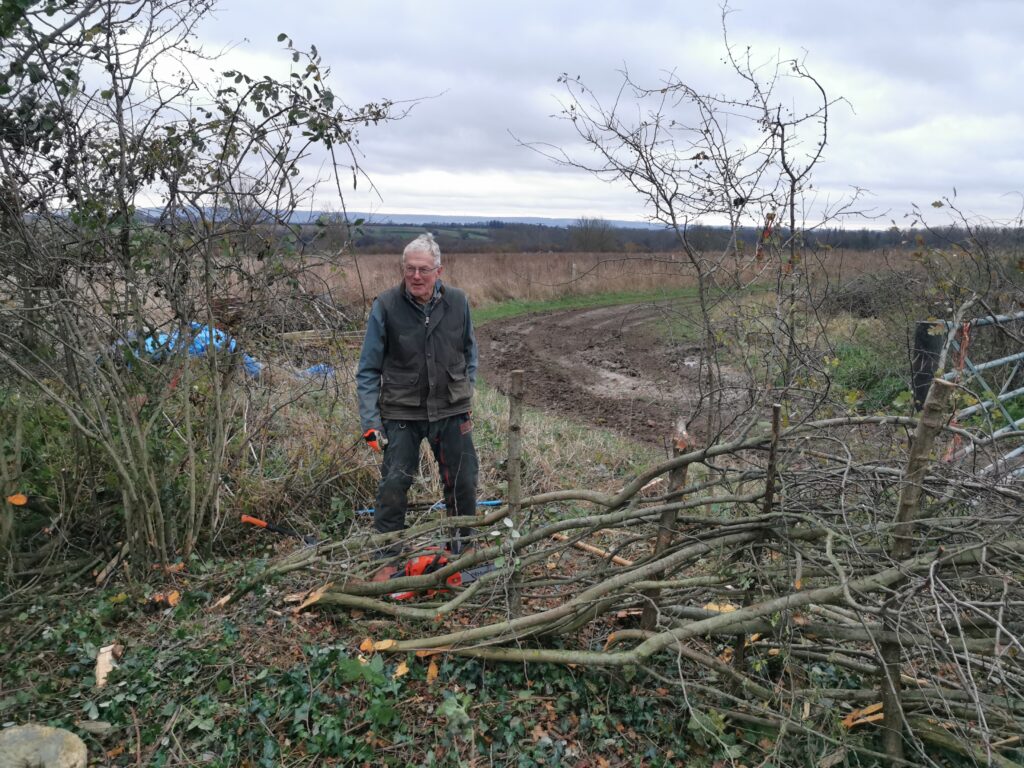 (Photo: Rose's father Michael Heybrook laying hedge)
(Photo: Rose's father Michael Heybrook laying hedge)
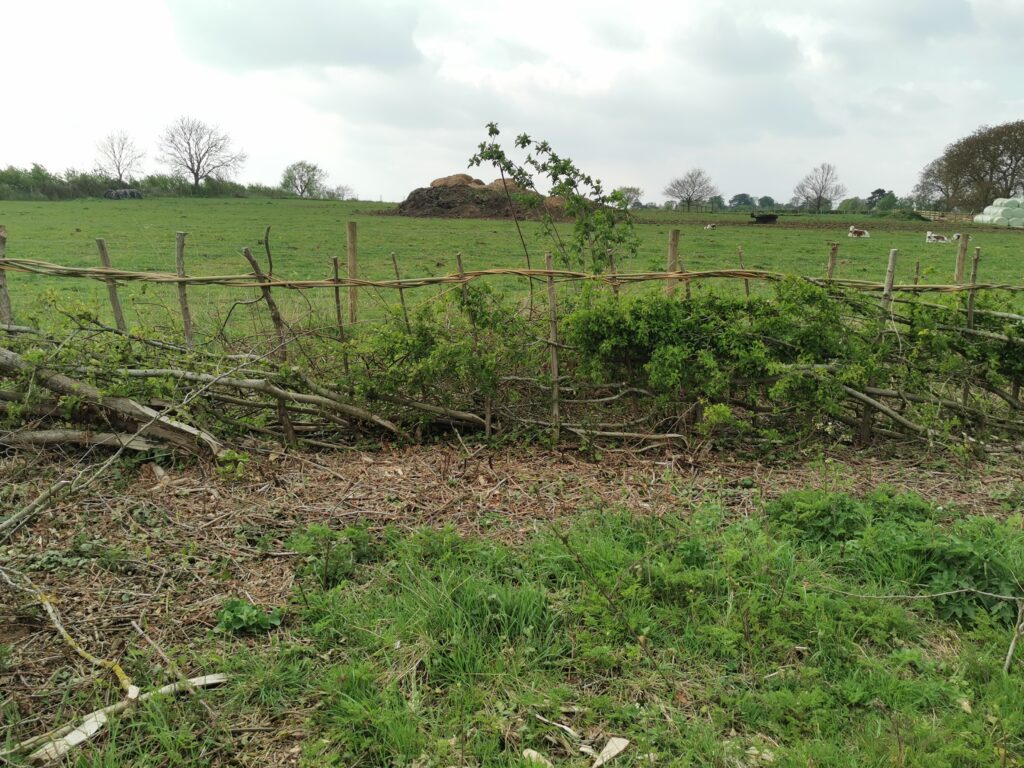 (Photo: laying down hedgerow)
(Photo: laying down hedgerow)
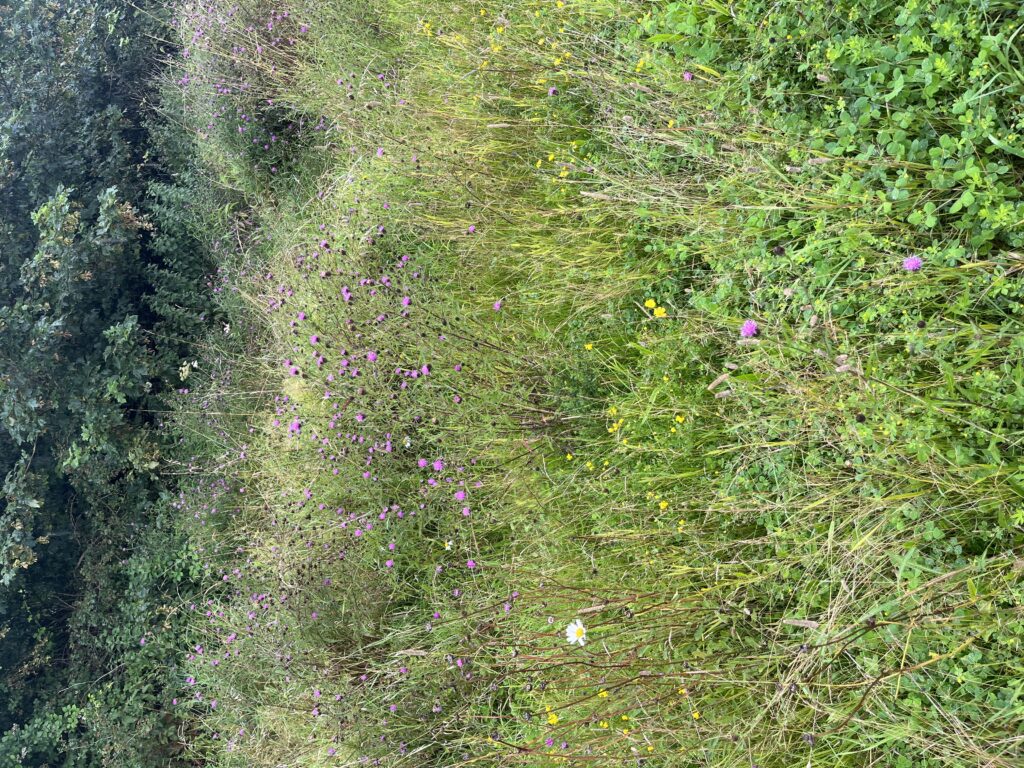 (Photo: hedgerows)
(Photo: hedgerows)
This network of freshwater ponds of different depths provides essential habitats for wetland flora and fauna. We have already seen an increase in species including water rail, common toad and tubular water-dropwort. Bird life has increased, with large flocks of duck, geese, gulls, egrets and swans. We recently saw 5 herons there.
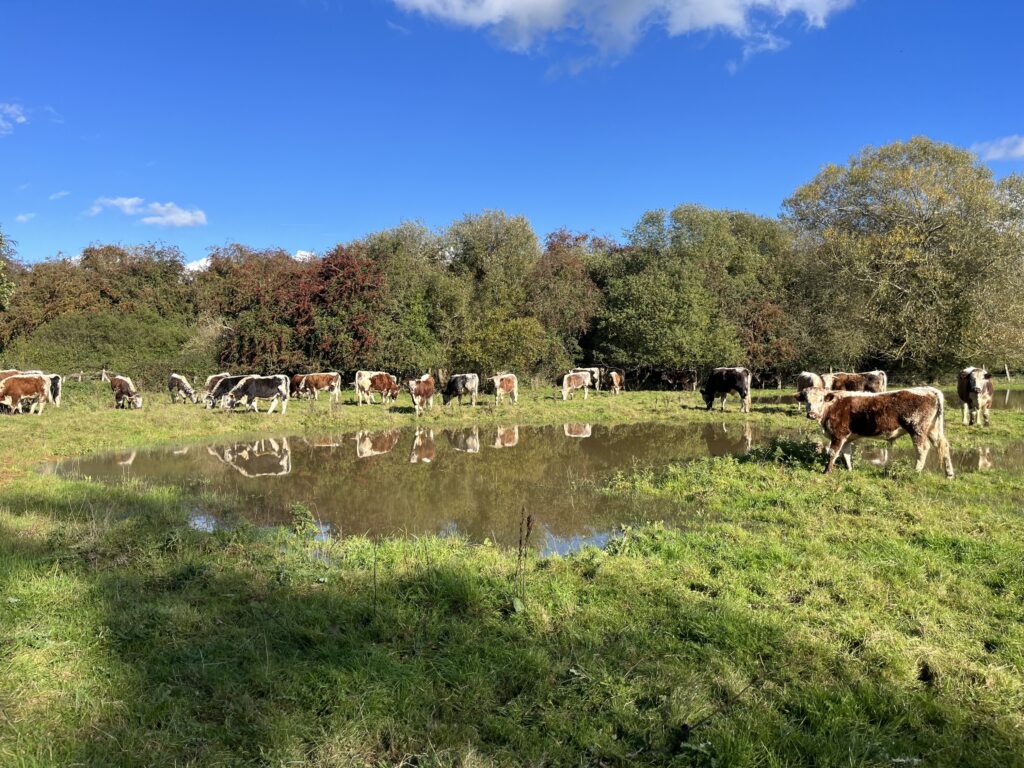 (Photo: long-horns in river restoration area)
(Photo: long-horns in river restoration area)
Most of the land which was previously in arable rotation has been planted with herbal leys. We have also planted native trees in these parcels and in corners of other fields. One parcel remains in arable for diversity where we grow winter bird seed and have a fallow plot for nesting lapwings.
In 2019, when I took over the farm, we planted a parcel with native scrub comprising trees and shrubs underplanted with fine grasses and wildflowers. This is becoming one of the most exciting areas of the farm providing a good habitat for wildlife. In a few years, we will allow our stock to browse it in a controlled way. We also introduced wild beehives into this area for pollination.
We are continually working to improve and increase our hedgerows and now have a good network of mature (50+ years old) and newly-planted hedges across the farm. We have a range of trees of different ages, including oak, ash, walnut, crab apple, holly, field maple and black poplar. The area used to be a stronghold for this now rare tree. In a northern parcel on the farm, our orchard of old fruit varieties includes apples, pears, medlars, quinces and plums. These were purchased from Bernwode Fruit Trees, a local nursery specialising in old varieties of fruit trees. They include unknown cultivars which were already on the farm and which they grafted for us - preserving the important genetics of these old trees as another valuable form of biodiversity.
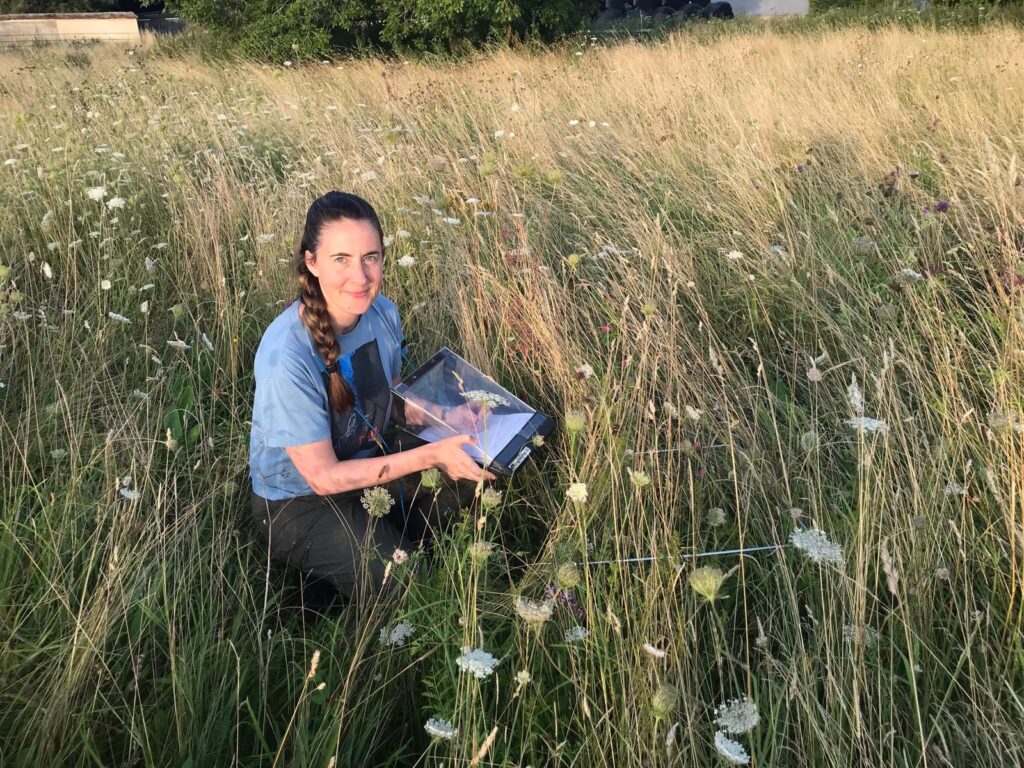 (Photo: Catherine Bottrill - Pilio botanical surveying)
(Photo: Catherine Bottrill - Pilio botanical surveying)
In our ecological baseline work with Pilio, in 2021 we recorded 8 species of butterfly and 6 species of wild bee including tawny mining bee, leaf-cutter bee, white-tailed bumble bee, gatekeeper, red admiral and brimstone. Other recent sightings include deer, badgers, foxes, hares, water shrews and grass snakes. The Buckinghamshire Owl and Raptor Group put up 3 owl boxes last year and this autumn we were delighted to find 2 resident barn owls. We also have nesting kestrels, partridges and lapwings, red kites and buzzards, large flocks of goldfinch; skylarks and meadow pipits. A baseline assessment of the farm done by Pilio recorded 39 species of birds whilst a very recent bird survey done by the Chilterns Conservation Board/AONB) identified 53 species, including a great white egret which is quite rare. This makes the farm of district importance in terms of its bird populations.
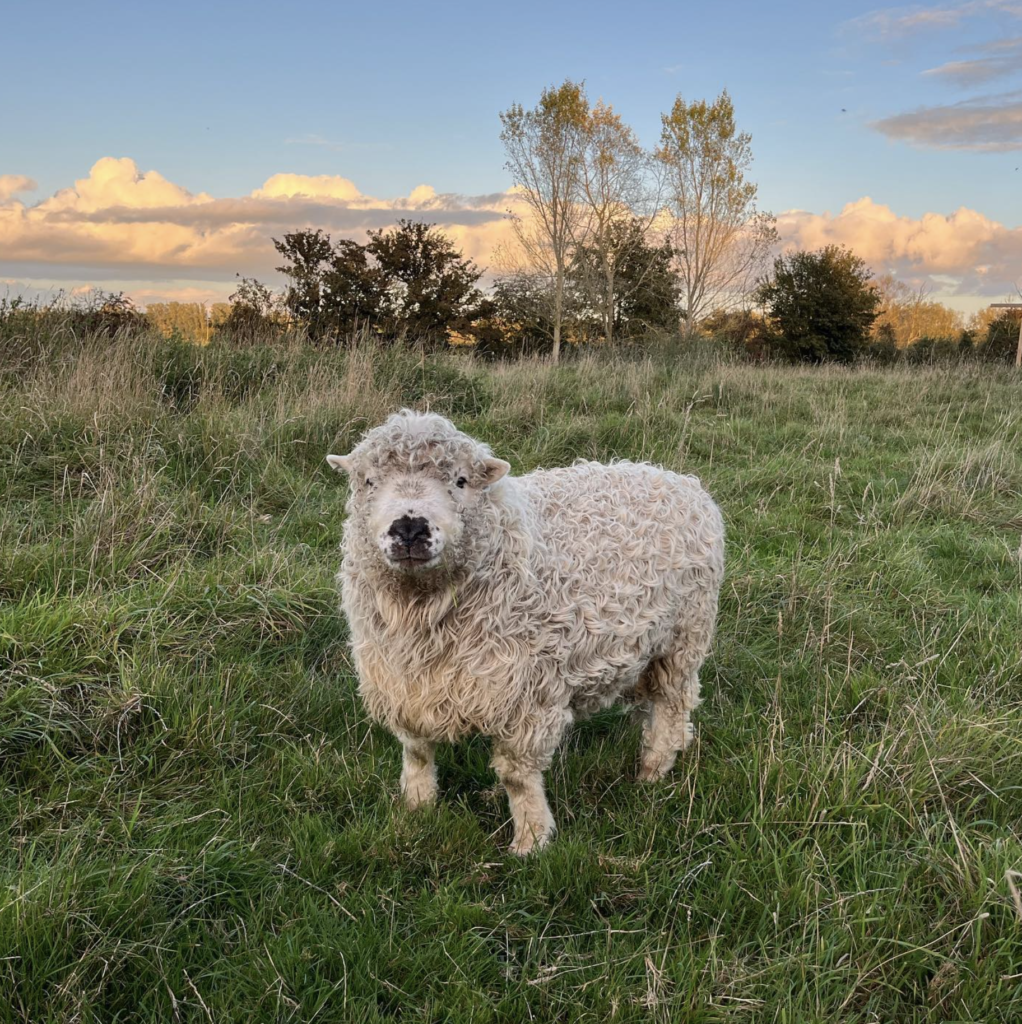 (Photo: grey faced Dartmoor)
(Photo: grey faced Dartmoor)
What do you to encourage this biodiversity?
We aim to farm in harmony with nature. We are committed to creating and preserving spaces for wildlife and biodiversity to flourish. We focus on healthy soil which in turn leads to healthy plants, healthy animals and healthy humans as well as clean water and air. We do not use any pesticides or artificial fertilizers, which damage the delicate fungal and biological networks in the soil, and we aim to capture carbon in the soil, plants, hedges and trees.
Our grazing ruminants increase biodiversity in the pastures, through their grazing and dung. This natural process helps to promote and diversify plant growth and improve soil fertility whilst the grazing animals create microhabitats and disperse seeds.
We also spread green hay from our more species-diverse meadows and we have also used hay from a local wildlife reserve. As a result, we have noticed an increase in plant diversity with species like dropwort and wild carrot emerging. We are not chasing productivity, although we hope this will follow as soil health improves.
We are in a mid-tier Countryside Stewardship scheme with options for herbal lays, pasture and wildflower meadows as well as hedge laying and both tree and hedge planting. Independently of stewardship, because there is no funding for some of the things we want to do, we have planted up areas with scrub and trees around the farm and in the pastures - encouraging diversity and creating habitats. In time, these trees and scrub will also benefit our livestock, providing shelter from wind and shade in summer. This is increasingly important for animal welfare with our hotter summers.
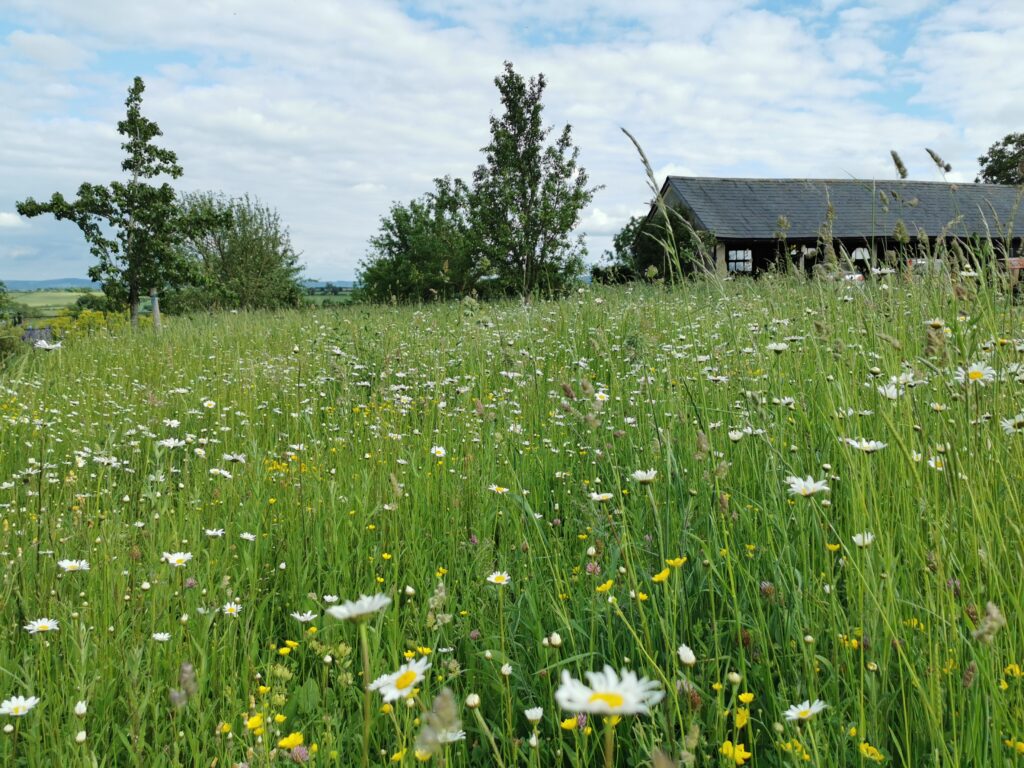 (Photo: meadow flowers)
(Photo: meadow flowers)
At present we make hay and silage for winter forage. We don’t cut all areas and we do not cut it all at the same time. Some fields are only grazed in order to ensure continual habitat for small mammals and birds.
We have put up bat and bird boxes and we have reptile mats for monitoring reptile populations around the farm. Our new wetland site will benefit freshwater species.
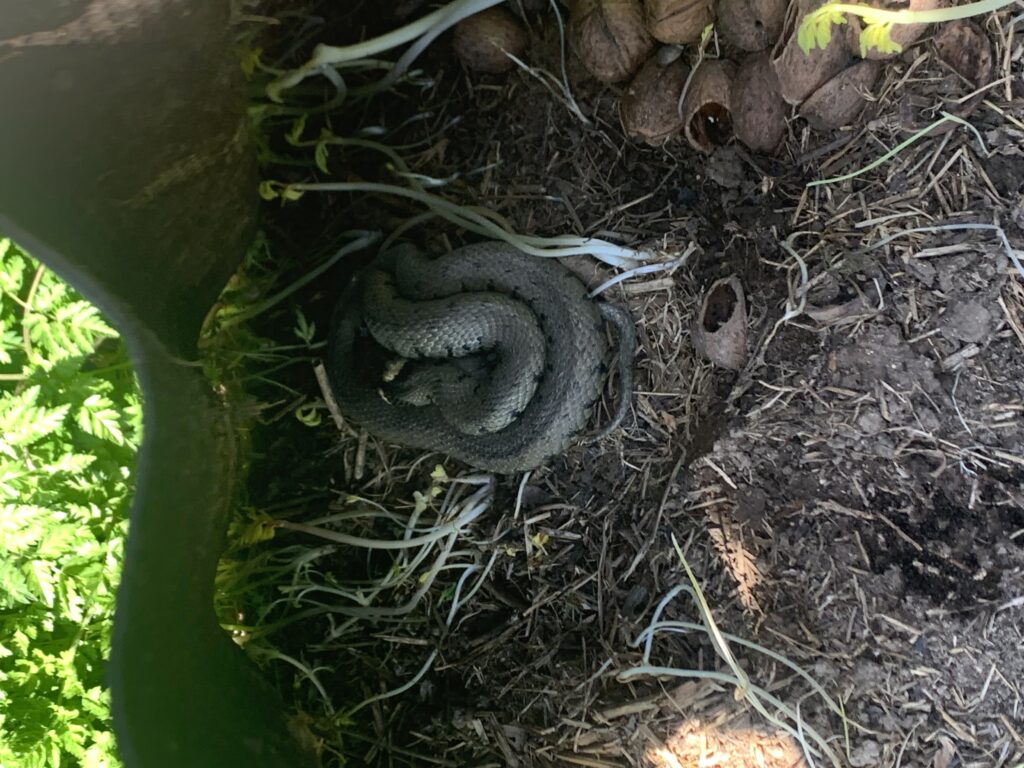 (Photo: grass snake)
(Photo: grass snake)



